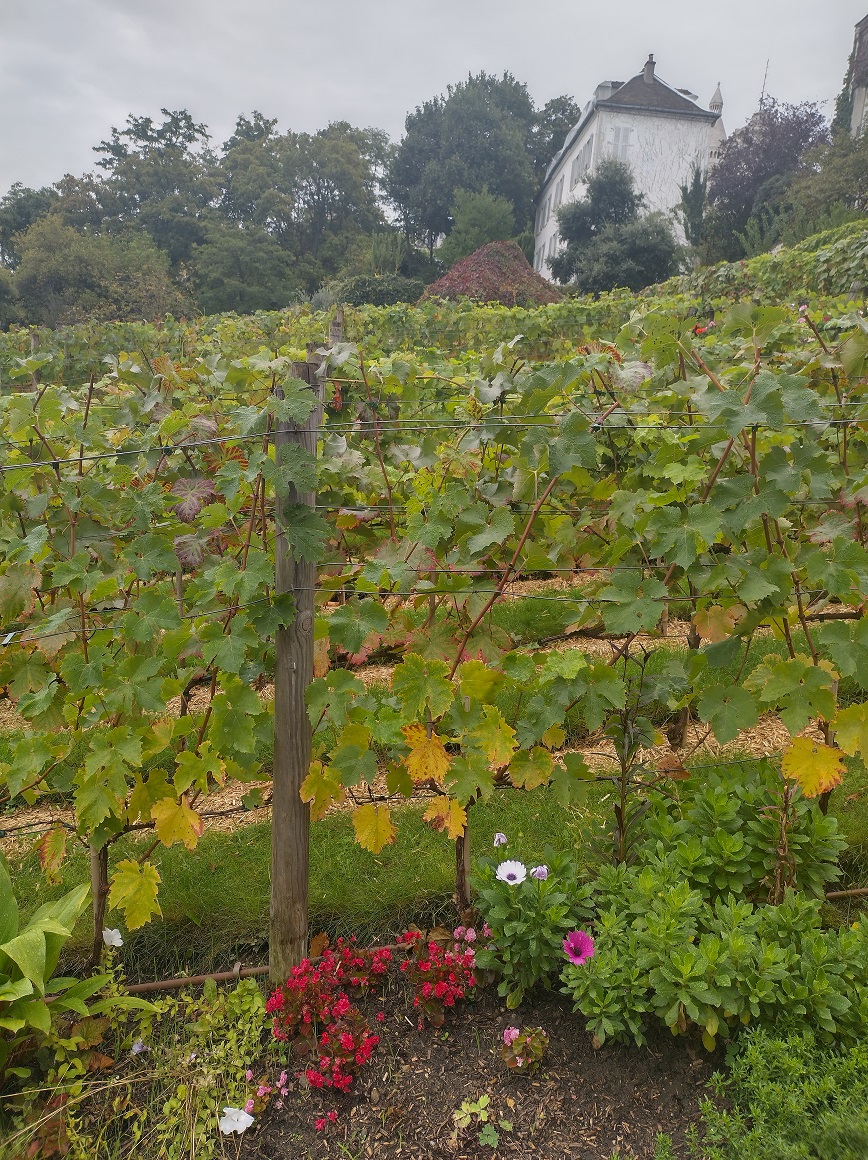They make one in Paris, don’t they?
Strangely enough, yes, wine is produced in Paris. The production yields fewer than 2000 bottles per year. The most know vineyard is situated in Montmartre, behind the Montmartre Museum, other vineyards are located in Belleville, in Bercy, in the XVIII arrondissement, and a secret one near Les Buttes Chaumont.

The wine is confidential and often made with Pinot Noir, Gamays, Pinot Menier, Sauvignon Blanc, and Chardonnay, though other varieties can also be included.
What is interesting, beyond having wine made inside of the capital of France, a city with a very high density, the geography of these vineyards holds its own fascination, none of them are located in the city center, and it is not a coincidence.
The limit of Paris today is very recent. This limit was defined in 1860. Before, Paris was limited to the actual city center (the 12 historical Arrondissements). The city limit was also a fiscal delimitation, “Le mur d’octroie”. All goods entering Paris had to be taxed. Outside, the limit you could find several villages like Montmartre, Belleville, Bercy, …
Most of these places were rural areas. The vines grew in Montmartre, Belleville, and other villages. At this time Montmartre was well known for its wine production. During the 16th century, most of its area was covered by vines. Paris was surrounded by vines. Some of today’s neighborhoods reflect that in their names, like Epinettes in the 17°, named after the local name of Pinot Blanc, or la Goutte d’Or in the 18°, named after the name of a local white wine.
The wine produced around Paris was a wine for everyday consumption, of average or even mediocre quality. It can be found in many places inside and outside Paris. The wine was named Guinguet.
The wine was exceptionally important in the Parisian culture. According to some sources, just before the French Revolution, the average consumption of wine was 122 liters per inhabitant. Wine was the second expense of Parisians. To avoid the higher price of wine inside Paris, people went to taverns outside the city limit.
There were special types of taverns, they were named after the name of the wine served there—these were known as ‘Guinguettes.. was a sort of tavern, mostly located outside Paris, but close enough for Parisians. It was popular on Sundays and during holidays. They allowed people to cheaply get drunk. the price of wine was twice cheaper than inside Paris. Popular areas included Belleville, Charonne, and Vaugirard.
Guinguettes in Paris’s faubourgs were so popular that when the king, Louis XVI, decided to extend the wall of grants around Paris, to include these suburbs, people started to protest. In July 1789, several customs services buildings were set on fire. It was just before the storming of the Bastille. To say that the price of wine is one of the causes of the French Revolution there is only one step.
In the 18th century, vineyards started to disappear in the profit of housing. In 1860 when these villages were integrated in Paris to form the actual twenty arrondisments, no vineyard was left. Guinguettes were still present inside Paris, but the development of the railway allowed Parisians to go far away in Guinguettes located in the east near the Marne River, the one that was pictured by the impressionist artists.
The actual Parisian vineyards are far more recent. The oldest one in Montmartre was created in 1932. Others were created between 1983 and 1996. This vineyards are managed by the City. You can try to buy a bottle of wine from Paris, but it will cost you 45 euro and I am not sure it is worth it.